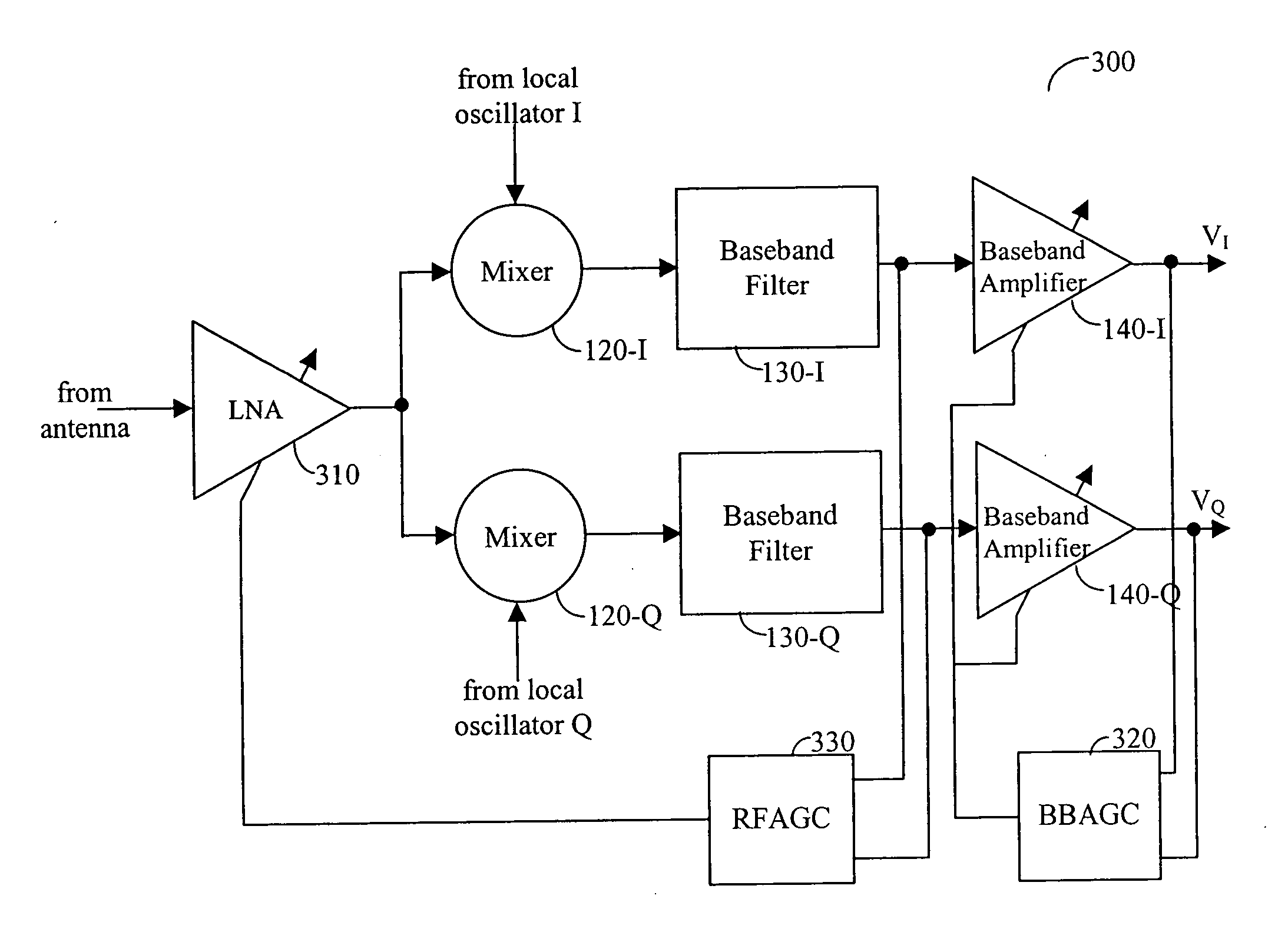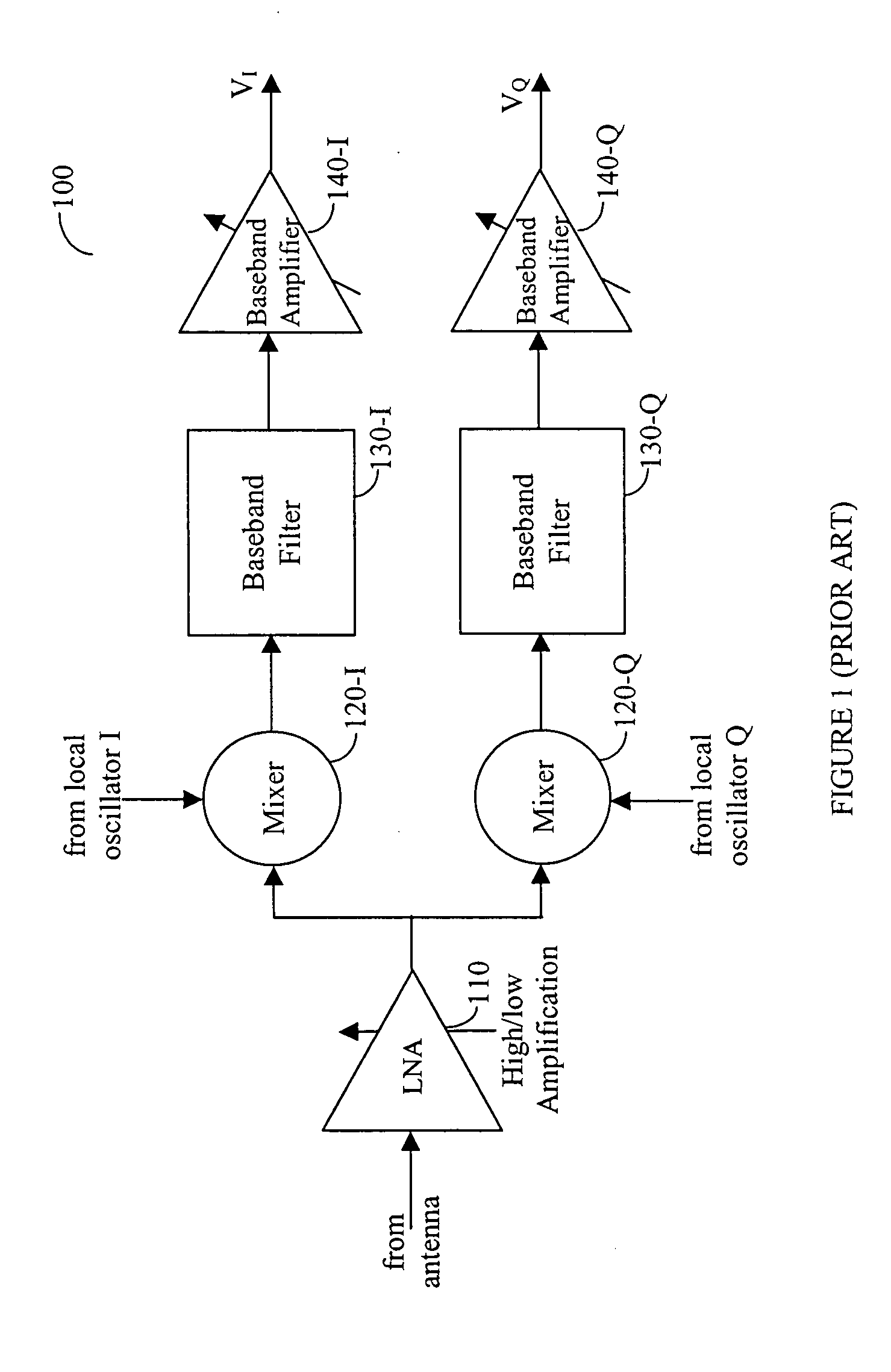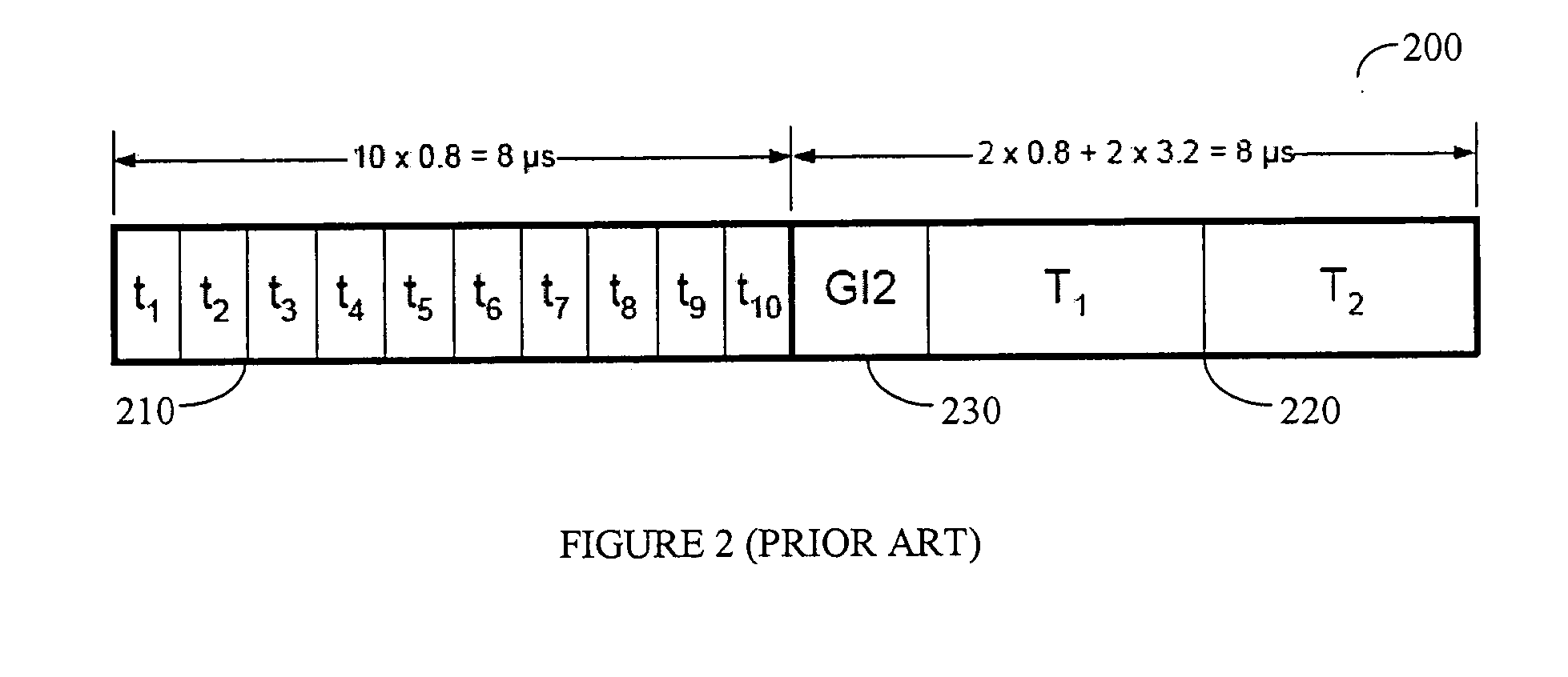Wireless LAN receiver with I and Q RF and baseband AGC loops and DC offset cancellation
a wireless receiver and loop technology, applied in the field of dm-based wireless receivers, can solve the problems of affecting the capability of the agc, less accurate estimation of frequency offset, and additional error in the agc functionality
- Summary
- Abstract
- Description
- Claims
- Application Information
AI Technical Summary
Benefits of technology
Problems solved by technology
Method used
Image
Examples
Embodiment Construction
[0013] In order to overcome the limitations of prior art solutions, there is disclosed a receiver having separate automatic gain control (AGC) units. One AGC unit is used for controlling the low-noise amplifier (LNA) amplification. A second AGC is used to control the amplification of the baseband amplifiers (BBAs). The AGC units receive their inputs from both the “I” and “Q” channels and provide a control voltage that is designed to control the amplification of the amplification unit under control of the respective AGC. By separating the AGCs into two units, a faster control over the desired amplification range is achieved. Furthermore, in one embodiment of the disclosed invention, the corner frequency of the AGC unit is changed to allow for coarse mode AGC at the beginning of the preamble period and a fine mode AGC at the later part of the preamble period.
[0014] Reference is now made to FIG. 3 where an exemplary schematic diagram of a two-stage AGC for an OFDM receiver 300 is show...
PUM
 Login to View More
Login to View More Abstract
Description
Claims
Application Information
 Login to View More
Login to View More - R&D
- Intellectual Property
- Life Sciences
- Materials
- Tech Scout
- Unparalleled Data Quality
- Higher Quality Content
- 60% Fewer Hallucinations
Browse by: Latest US Patents, China's latest patents, Technical Efficacy Thesaurus, Application Domain, Technology Topic, Popular Technical Reports.
© 2025 PatSnap. All rights reserved.Legal|Privacy policy|Modern Slavery Act Transparency Statement|Sitemap|About US| Contact US: help@patsnap.com



